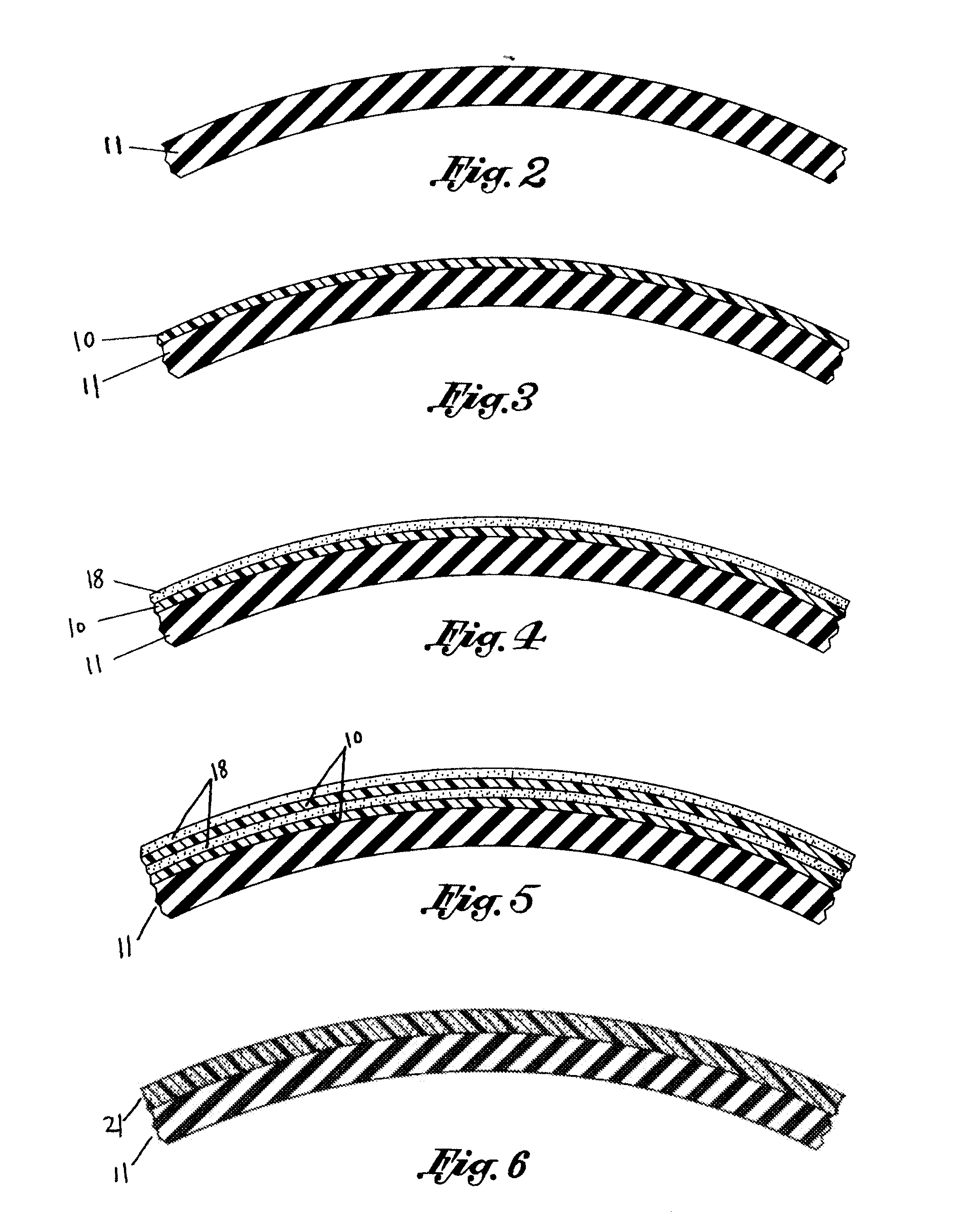Implants and methods for manufacturing same
a technology of soft tissue implants and manufacturing methods, which is applied in the field of soft tissue implants, can solve the problems of reducing the efficacy, affecting the quality of implants, so as to facilitate tissue ingrowth, discourage the organization of fibrous capsules, and encourage the fixation of implants in patients
- Summary
- Abstract
- Description
- Claims
- Application Information
AI Technical Summary
Benefits of technology
Problems solved by technology
Method used
Image
Examples
example 1
[0053]A mixture of about 7.5 wt. % PVA 2000 in water and about 40 wt. % acetoxy RTV silicone in xylene in a 3:1 volumetric ratio is prepared and homogenized for 30 seconds. An acetyl mandrel is placed into the mixture and coated uniformly as in a standard dip-coating process for the manufacturing of breast implant shells. The mandrel is then placed into a fluidized bed reactor with salt granules until no more granules can be deposited on the mandrel (about 5-10 seconds). This addition of salt particles tends to dry and stabilize the mixture by absorbing some of the water, thereby increasing the viscosity of the mixture. The coating is allowed to stabilize further at either 90° C. for about 15 minutes or at room temperature for about hour, or otherwise sufficiently such that the next layer of composition may be applied. The procedure is repeated 3-5 times to obtain a coating of desired thickness.
[0054]Final curing may be performed at 165° C. for 2 hours, leaching with water or DCM fo...
example 2
[0073]A composition is prepared by mixing polyethylene glycol monomethyl ether (2000 Da), which will serve as a leachable agent, with a low viscosity silicone elastomer dispersion, for example, (e.g. polydimethylsiloxane, polydiphenylsiloxane, poly(dimethylsiloxane-co-diphenylsiloxane), poly(dimethylsiloxane-ran-diphenylsiloxane), etc.), in an organic solvent (e.g. xylene), and at about 5 to about 40 wt %, or in some specific embodiments, 17, 25 and 35 wt % of acetoxy RTV silicone. This composition is applied to the surface of an elastomeric shell held on a mandrel or other mechanical support. The layer is allowed to evaporate most of the solvent off.
[0074]A coating of sodium chloride crystals (about 250 μm to about 850 μm size) are applied to the tacky composition layer by submerging the coated shell into a fluidized bath of salt and air. This forms a relatively uniformly distributed single layer particle coating.
[0075]The elastomer is allowed to evaporate the solvent off and subse...
example 3
[0077]The same process is performed as in Example, 1, except that the composition is a mixture of 10 mL xylene, 10 mL DCM, 5 mL by dry volume PEG 2000 and 5 mL by dry volume acetoxy RTV silicone elastomer.
PUM
| Property | Measurement | Unit |
|---|---|---|
| diameters | aaaaa | aaaaa |
| particle size | aaaaa | aaaaa |
| diameter | aaaaa | aaaaa |
Abstract
Description
Claims
Application Information
 Login to View More
Login to View More - R&D
- Intellectual Property
- Life Sciences
- Materials
- Tech Scout
- Unparalleled Data Quality
- Higher Quality Content
- 60% Fewer Hallucinations
Browse by: Latest US Patents, China's latest patents, Technical Efficacy Thesaurus, Application Domain, Technology Topic, Popular Technical Reports.
© 2025 PatSnap. All rights reserved.Legal|Privacy policy|Modern Slavery Act Transparency Statement|Sitemap|About US| Contact US: help@patsnap.com



